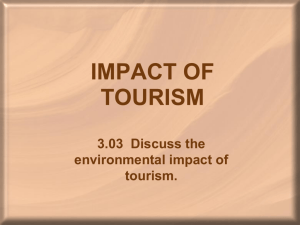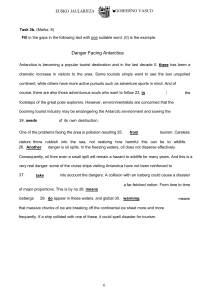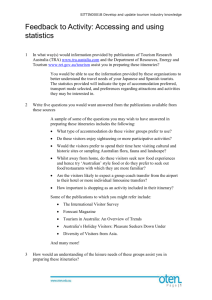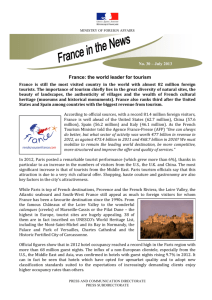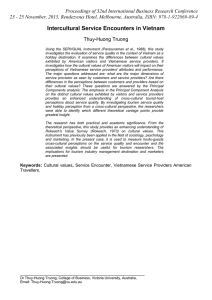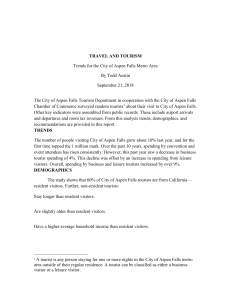impact of tourism - Mrs.Weddington
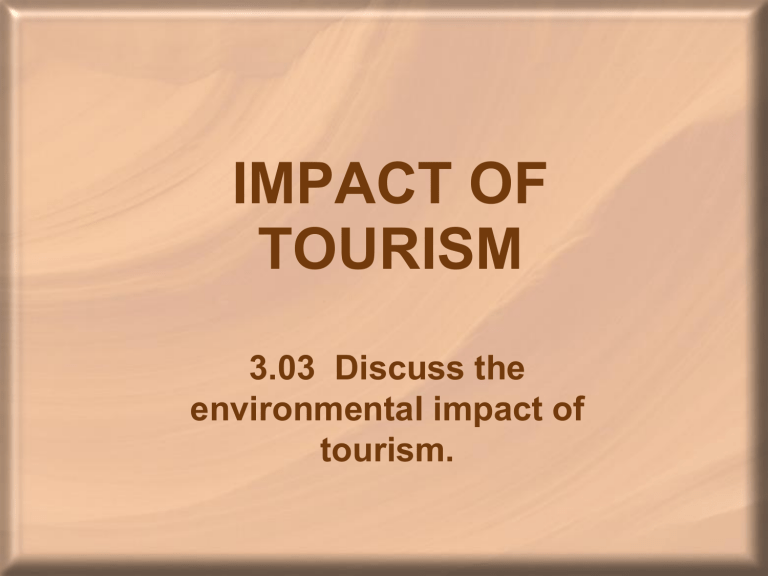
IMPACT OF
TOURISM
3.03 Discuss the environmental impact of tourism.
Environment
The climatic, social, and cultural conditions that influence the life of a person or community
Positive environmental effects of tourism
• Preserving natural resources is most important element in the development of a tourist destination.
• Revenues generated may be used to improve animal habitats, wilderness areas, and infrastructure.
• If tourists are educated about the environment and natural resources, they are more likely to understand the importance of preservation efforts and to participate in that preservation.
• Appropriate design of buildings in terms of color, signage, and landscaping enhances the beauty of an area.
Negative environmental effect of tourism
*An increase in the number of people using an area’s resources will usually have a detrimental impact on the environment.
• Effects on wildlife
• Effects on landscapes
• Pollution of the environment
Effects on wildlife
• Disrupting feeding and breeding
• Killing of animals
• Destruction of habitats
• Restriction of wildlife’s natural movement and migration
Effects on landscapes
• Erosion
• Land development
• Destruction of natural beauty
Pollution of the environment
• Land
• Water
• Air
• Chemical
• Noise
Carrying capacity
The number of users that can be accommodated in an area before visitors perceive a decline in the desirability of the area or before ecological damage is done
Factors used to determine carrying capacity
• The number of visitors
• The amount of “use” by the average visitor
• The quality of resource management and facility development/design
• The number of residents and their quality-of-life needs
• The number of other users of the area
Infrastructure
The foundation and other systems needed to support and accommodate visitors
• Water supply
• Sewage disposal
• Public utilities
• Roads
Superstructure
Facilities needed to serve specific needs of tourists
• Hotels
• Restaurants
• Attractions
